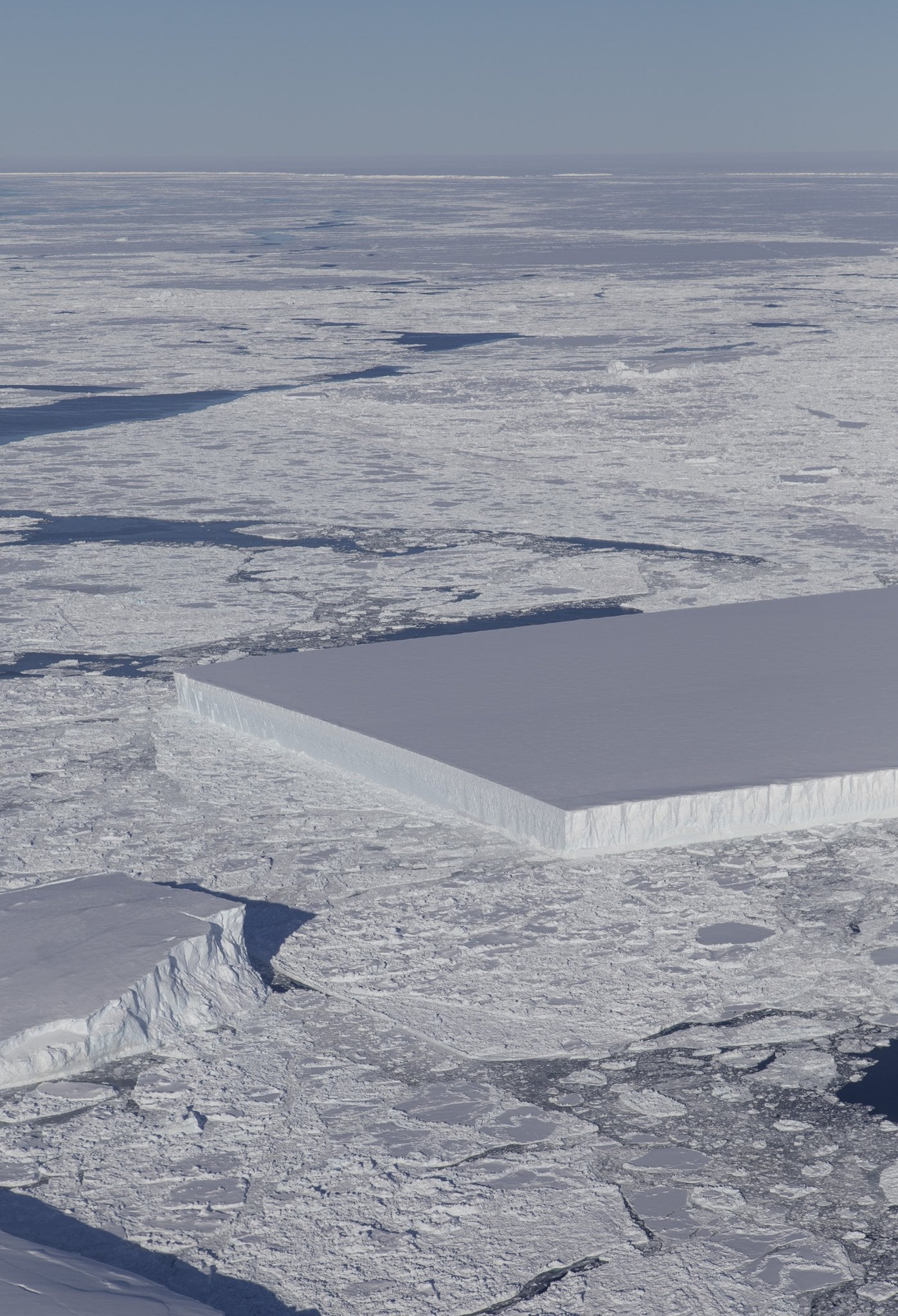NASA has shared an image of a strange, perfectly rectangular iceberg floating off the coast of the Antarctic Peninsula close to the Larsen C ice shelf:
From yesterday’s #IceBridge flight: A tabular iceberg can be seen on the right, floating among sea ice just off of the Larsen C ice shelf. The iceberg’s sharp angles and flat surface indicate that it probably recently calved from the ice shelf. pic.twitter.com/XhgTrf642Z
— NASA ICE (@NASA_ICE) October 17, 2018
NASA spotted the perfectly rectangular iceberg during an IceBridge flight, which is an airborne survey of Earth’s polar ice. The mission is designed to provide accurate 3D views of the ice created in the Arctic and Antarctic while delivering up-to-date information on changes in the ice shelves.
As you can see in the above tweet, the space agency described the block as a “tabular iceberg” which seems to have recently broken off the Larsen C ice shelf. Since the iceberg has sharp angles and a flat surface, NASA suggests it came from a calving event that occurred recently.
“We get two types of icebergs: We get the type that everyone can envision in their head that sank the Titanic, and they look like prisms or triangles at the surface, and you know they have a crazy subsurface,” NASA ice scientist Kelly Brunt told Live Science in an interview. “And then you have what are called ‘tabular icebergs.’”
She explained that tabular icebergs remove themselves from the edges of ice shelves in a process similar to how a fingernail which grows too long ends up breaking. The result is an iceberg with a sharp edge. However, Brunt added that this perfectly rectangular iceberg was a “bit unusual,” as she estimates its size to be roughly one mile wide.
The Larsen C ice shelf is being monitored continually because it has been showing signs of disintegration. Last year, an iceberg the size of Delaware dubbed A-68 broke away, causing concerns that the entire thing was about to break like the Larsen A and B ice shelves did before.
A-68 has probably been floating around the Weddell Sea since it broke away. However, it seems to be returning to Antarctica. Mark Brandon from the Open University in London wrote in a blog post that the ice shelf is rotating, and if it continues along its current course, its northern edge could collide with Larsen C.
“It has a spectacular amount of momentum and it’s not going to be stopped easily,” he wrote in his blog post.





